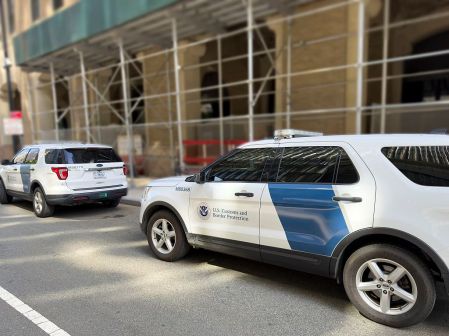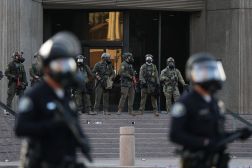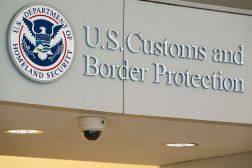U.S. will use facial recognition at airports

U.S. border checkpoints at airports of entry nationwide will begin using facial recognition technology on foreign visitors and U.S. citizens after a successful pilot just outside the nation’s capital, according to a new privacy disclosure from the Department of Homeland Security.
U.S. Customs and Border Protection, a DHS agency, piloted its “1-to-1 Facial Comparison Project” at Washington Dulles International Airport between March and May 2015, and now is bringing that technology to all U.S. airports of entry on a permanent basis, a DHS privacy impact assessment released Tuesday said.
The expansion will be incremental, starting with John F. Kennedy International Airport in New York City sometime this month. The technology will be used to confirm the identity of travelers with electronic passports, which include a computer chip containing, among other data, a digital photo of the holder.
“CBP continues to provide innovative technologies to enhance homeland security while facilitating international travel,” CBP Commissioner R. Gil Kerlikowske said in a statement. “This biometric capability will aid our officers in identifying legitimate travelers while protecting them from fraud and identity theft with little to no delay to the entry process.”
The program is part of the DHS Science and Technology Directorate’s Apex Air Entry and Exit Re-Engineering project, meant to increase “CBP’s capacity to screen travelers entering the United States (U.S.), and to confirm the departure of non-U.S. citizens from U.S. airports,” according to a DHS fact sheet. The technology uses the image stored in a traveler’s e-passport and compares it to a picture taken at the checkpoint as they present their documents.
The software gives a score between zero and 100 to indicate its certainty of a match. The technology is used at CBP officers’ discretion.
The expansion comes after “the March 2015 test of this capability showed that biometric facial matching could increase the confidence with which [CBP officers] identified individuals without having a negative impact to port operations and traveler wait times,” the PIA says.
During the pilot project at Dulles the photos taken for comparison were retained for technical analysis of the software’s efficacy. But the privacy assessment says that going forward, photos will not be stored if they do not result in an enforcement or administrative action.
Additionally, with the expansion of program, CBP will also expand the travelers on whom it uses the technology. In the pilot, customs agents took and compared the images only of U.S. citizens 18 years and older. Now, it will include adult first-time travelers from the 38 Visa Waiver Program countries, “because DHS has identified an appreciable risk of passport and identity fraud among this population of travelers,” the assessment states.
The VWP allows citizens of participating countries to come to the U.S. for 90 days for business or pleasure without requiring a visa. One condition for a nation’s participation in the VWP is that it issues e-passports. VWP travelers arriving for the first time are also enrolled in CBP’s fingerprint database, IDENT, so those who have visited the United States before can have their identity confirmed using fingerprints.
Many civil liberties organizations have raised concerns in the past of the privacy implications related to using facial recognition technologies at airports. The American Civil Liberties Union opposes concepts similar to the CBP program, worrying they could turn into widespread surveillance of innocent citizens.
“One threat is the fact that facial recognition, in combination with wider use of video surveillance, would be likely to grow increasingly invasive over time,” the ACLU writes in a Q&A on its website. “Once installed, this kind of a surveillance system rarely remains confined to its original purpose. New ways of using it suggest themselves, the authorities or operators find them to be an irresistible expansion of their power, and citizens’ privacy suffers another blow. Ultimately, the threat is that widespread surveillance will change the character, feel, and quality of American life.”
The ACLU also cites a study by the National Institute for Standards and Technology that found a large rate of error in facial recognition technology to match photos taken only 18 months apart.
At this point, the project works only as a standalone system at the Dulles location “that does not communicate with any other CBP systems,” the PIA says. CBP’s intent is to create an integrated and nationwide system connecting the systems at each airport to one another and other existing CBP systems.
CBP did not return FedScoop’s request for comment prior to publication.






